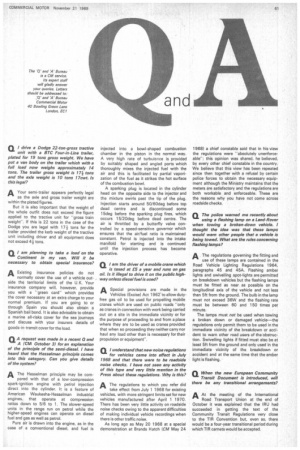CI A request was made in a recent Q and
Page 63

If you've noticed an error in this article please click here to report it so we can fix it.
A (CM October 3) for an explanation of the principle of the semi-diesel. I have heard that the flesselman principle comes into this category. Can you give details of the system?
AThe Hesselman principle may be com
pared with that of a low-compression spark-ignition engine with petrol injection direct into the cylinder. It is a feature of American Waukesha-Flesselman industrial engines, that operate at compression ratios down to 5/6 to 1. The slower-speed units in the range run on petrol while the higher-speed engines can operate on diesel fuel and gas as well as petrol.
Pure air is drawn into the engine, as in the case of a conventional diesel, and fuel is injected into a bowl-shaped combustion chamber in the piston in the normal way. A very high rate of turbulence is provided by suitably shaped and angled ports which thoroughly mixes the injected fuel with the air and this is facilitated by partial vaporization of the fuel as it strikes the hot surface of the combustion bowl.
A sparking plug is located in the cylinder head on the opposite side to the injector and the mixture swirls past the tip of the plug. Injection starts around 50/60deg before top dead centre and is discontinued some 15deg before the sparking plug fires, which occurs 15./20deg before dead centre. The air is throttled by a butterfly valve controlled by a speed-sensitive governor which ensures that the air/fuel ratio is maintained constant. Petrol is injected into the intake manifold for starting and is continued until the injection process has become operative.




































































































